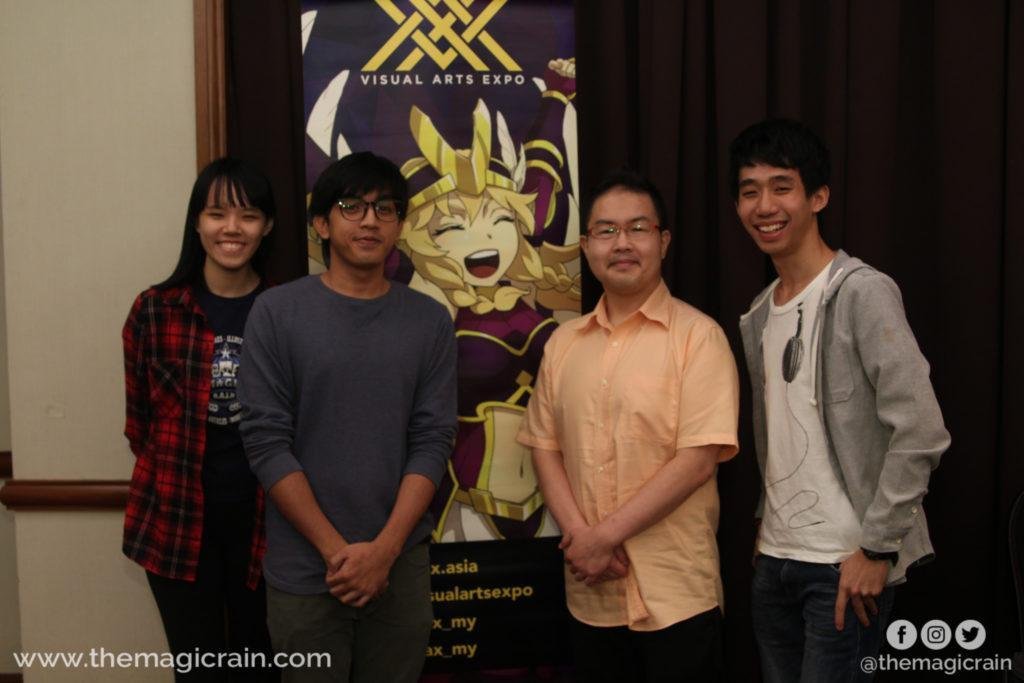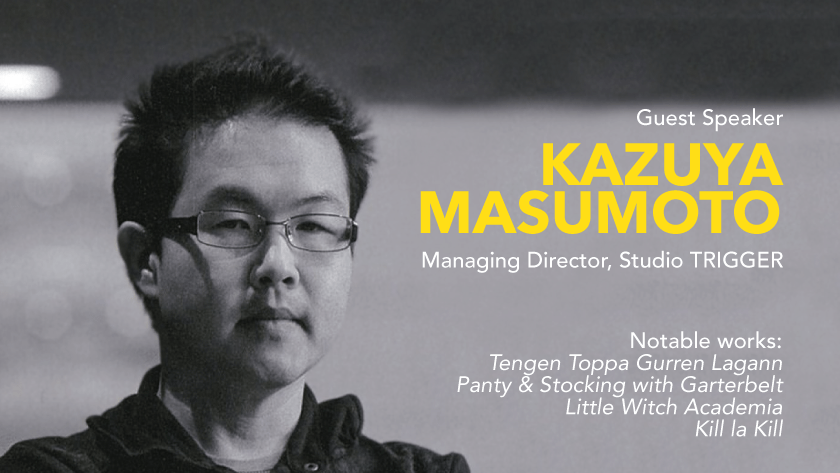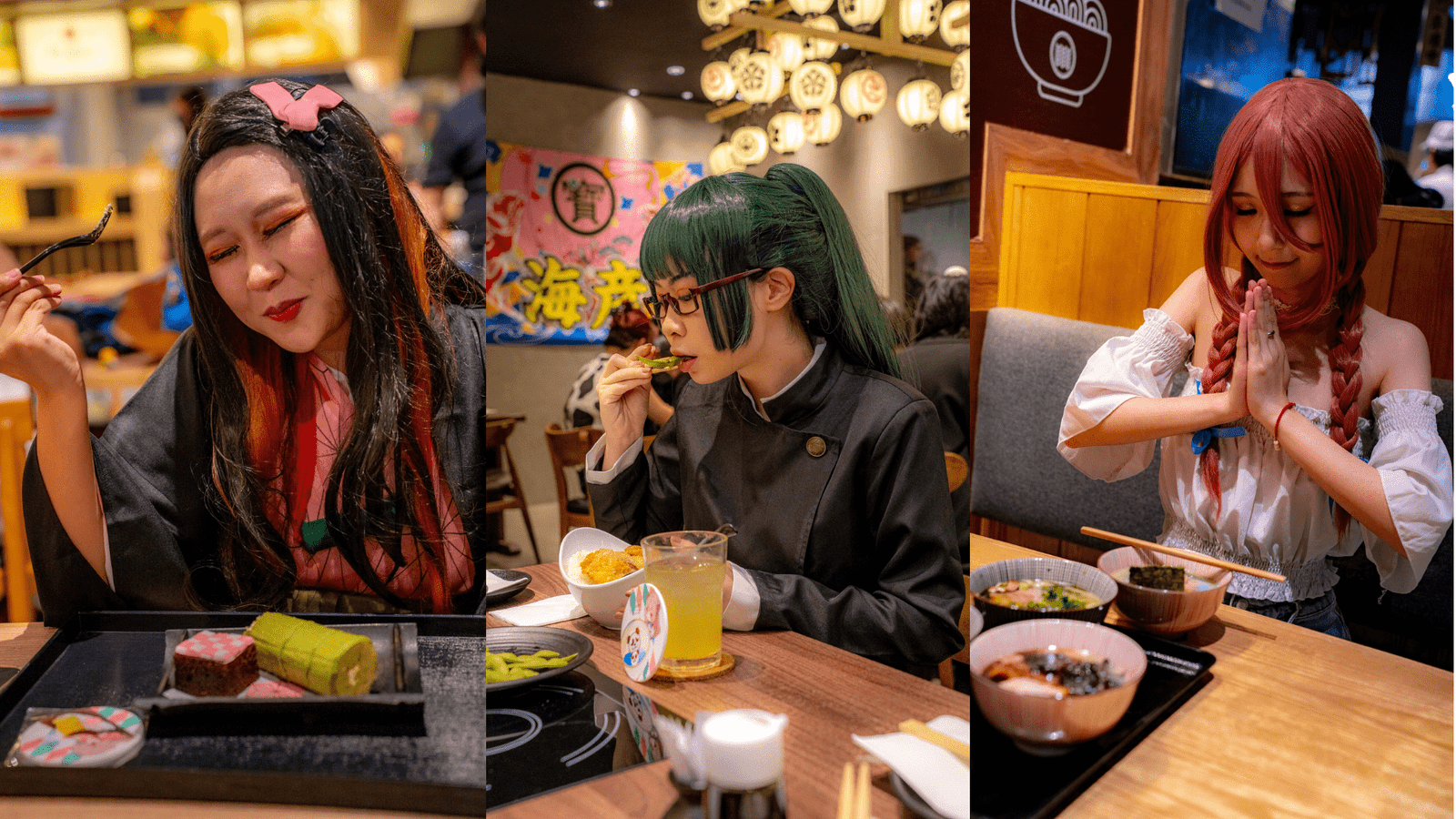A while back during Visual Arts Expo 2017, THE MAGIC RAIN team had the honour of interviewing Kazuya Masumoto-san from Studio TRIGGER.
Starting his career as an episode runner, he participated in numerous titles such as Digimon, Zatch Bell!, Ojamajo Doremi, Popolocrois Story, Hamtaro, and Hajime no Ippo. Throughout his career, he has served as a producer for many legendary anime titles, including Tengen Toppa Gurren Lagann, Panty and Stocking with Garterbelt, Little Witch Academia and Kill la Kill!
Disclaimer: The contents of this interview have been mildly edited for additional reading clarity, but the meanings have not been altered.
Q: What are you currently working on?
A: At the previous anime expo, Studio TRIGGER announced 3 new works in the making and as of right now, we don’t really have detailed information that can be released just yet. We’re actually working together with A1-Pictures and they’re the same staff who made Gurren Lagann in the past so we’re working together to make an original, never-before seen project. It is something we want people to see for the first time, something new. Currently, all the staff at our studio are hoping to work together as the proposals come out.
Q: When you first start a project, what are your first thoughts? What do you go through, what are some of the things that you think about?
A: The most important thing when starting a new project is that the director in charge has to have a proper visualization of what he wants and the staff involved have to understand each other so they can work together to bring it to fruition. As we start a new project, the process is like when you grow a tree. It starts with the seed, which is the idea from the director so he has to plant it into the minds of everybody involved. Then, the staff will have to give out orders, bring out the content and conduct more research to make sure they can help it grow. The staff act like the sun, giving the seed more nutrients and more ideas to the point where it grows bigger and bigger to the job of the producers, the creative designers, and everybody involved to see how big that tree can grow.
Q: So, have you ever went through that entire brainstorming session only to find out that something was wrong? How often would these kinds of things happen? How many things from the drawing board actually make it onto the final stages of the anime?
A: So, instead of having the ideas and ending up not doing them, we actually brainstorm a lot of ideas. Let’s say we have 100 ideas, we will pick the best among the 100 and then we would start producing it. Similarly to how we are in life, we will have a lot of choices that we want for our future, and maybe you have a lot of decisions to make on what you want to do, but you end up with only one job. You may not be happy with that job in the future, but whatever it is along the way, you have to have all those choices so that you can gain experience from them and you will know better in the future. Just like that.
Q: What in your opinion has changed the most over the years?
A: Japan is a small country which is surrounded by sea. One thing that we’re very thankful for is that in the past 2000 years, we haven’t really fought other people even in terms of religion, we have Buddhism, Shintoism, etc. What’s important is that you understand everyone’s individual personalities and not be so strict with each other. So before there was anime, there was manga. Even during the time of manga, they will have a lot of different types of manga coming out but you will never get told something like, “This manga is not good”.
During this time, when you are in your teens or in your 20s, that’s when you have manga with you the most and that’s also the time for you decide what you want to do with your life. It’s a very vulnerable, a very special sort of time in life. So in the same way, the same thing is happening now with anime culture, there are so many different types of anime, but you feel like you can accept more types the more you see it and because of this, more and more anime can exist. The interesting thing about Japan is that in terms of both anime and manga, it’s not bound by religion or race and because of this kind of thinking, more and more anime can exist. It’s a strange country where both perverted stuff and violent stuff are acceptable, but only in picture. That is the kind of country where children watch these kinds of things and because children these days are being exposed to different genres, when they grow up, they are more accepting about these things. I feel that all of you are also the same.

Q: So these kinds of manga and anime keeps you moving forward right?
A: For me it’s actually pretty hard. Even though you have manga and anime, in everything you do in life you pretty much have 50% happiness and 50% hardships so it’s the same in whatever you do. You can’t exactly say that because of one thing, you’re entirely happy, because you still have both sides to worry about. So you can’t really say what real human emotion you feel when it comes to that.
Q: In terms of the future of anime, 3D animation has recently been on the rise, for example, Ajin and RWBY. Is that something that Studio TRIGGER would want to do?
A: It’s not that we want to do 3D animation, we just want to express ourselves. As long as it’s interesting, we’ll do it in any form. I want to make something where people think is interesting. Aside from all these interesting things, maybe I’d like to try out 3D animating. But I do not want the audience to see it as a 3D anime but an interesting anime that uses 3D effects.
Q: So, there are a lot of animation studios these days that choose their projects based on the profit they can potentially gain from it. But Studio TRIGGER seems like the kind that are driven from creativity instead. What are the kinds of challenges you face when you wanted to create a studio with this kind of vision in mind?
A: Some studios actually accept projects where they get a bigger profit, but as I’ve previously mentioned, there’s 50% of enjoyment and 50% of hard work. So at times, I would accept a project to find enjoyment in it but the difficulties that came along with it were of course tough so there were times where I had to really support the staff instead. Even so, if the studio is accepting the project because of the profit, it’s not wrong for them to be doing that because it is their job. However, for our studio we want to accept offers and we want to make it intriguing, because we ourselves feel that if the anime isn’t interesting, nobody will watch it anyway. So we ourselves will make sure that it is interesting enough.
Q: In Japan, the animation community is very competitive and with A LOT of studios around. How do you make yourself stand out and keep producing good content?
A: We actually have specialties, and our specialties are things that stand out. With the anime that we make, we try not to make it too complicated. So that the audience can understand what we’re trying to relay and if they can relay it, they can get into the vibes for the anime. I feel like maybe you’d might not be able to write these out in your articles but the way Studio TRIGGER tends to make our anime is that we make it as though it’s a drug. We want you to watch it again and again and again even if you’ve seen it before, and even after years and years past, you will still feel like you would want to watch it again. That’s the kind of thinking we have and how we want to go about when it comes to making anime in Studio TRIGGER.
With that, we’d like to thank Kazuya Masumoto-san for the really interesting interview and we look forward to what else Studio TRIGGER will offer us in the near future!














Comments 1